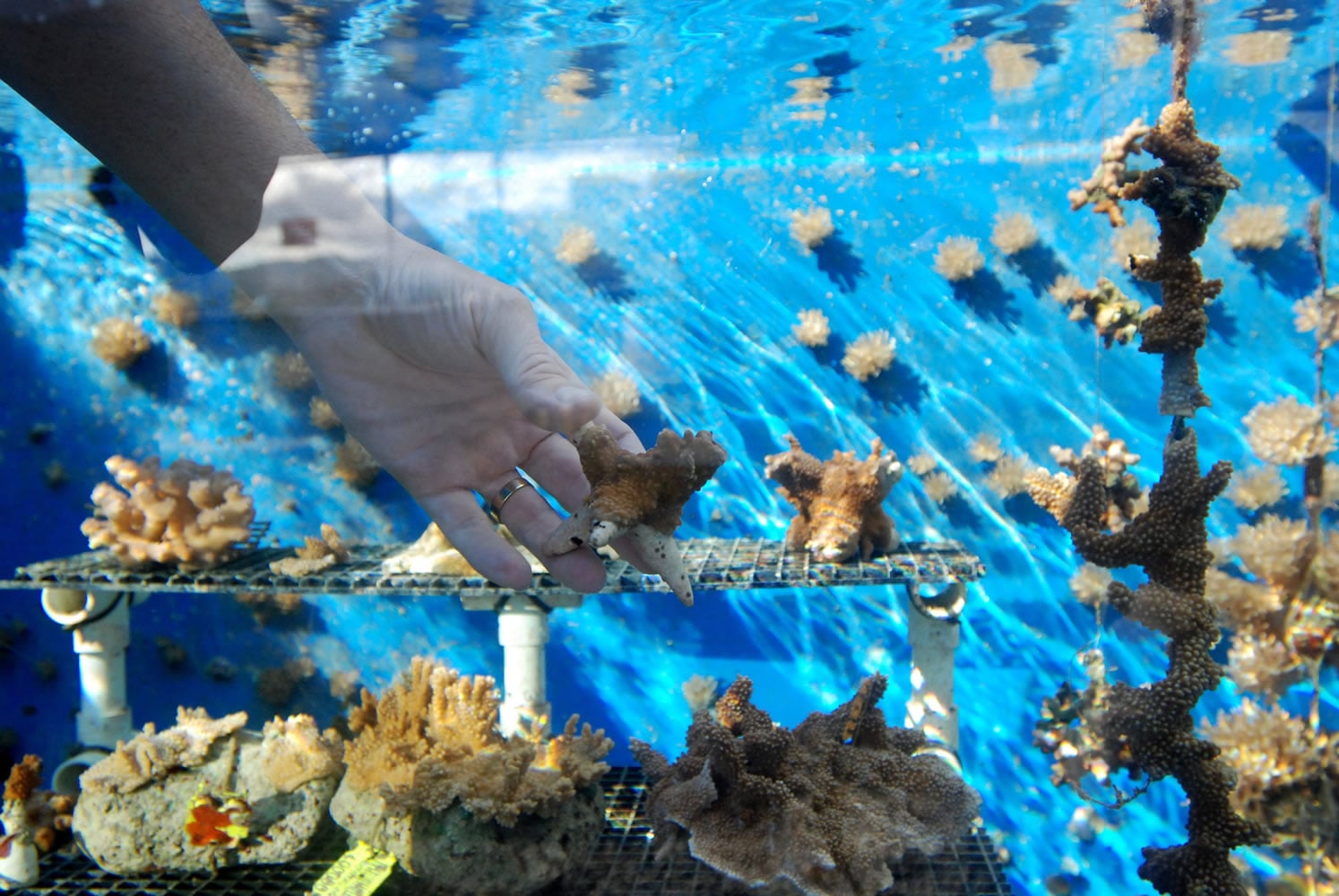HONOLULU — Most of Hawaii’s species of coral are unlike other coral around the world in that they grow very slowly, making restoration projects for endangered reefs in the state difficult.
But officials in Hawaii have come up with a plan to grow large chunks of coral in a fraction of the time it would normally take. In doing so, they say they hope to create a stock of replenishing species to build up damaged or unhealthy reefs.
State officials gave a tour of their new coral nursery Thursday, showing off their Fast-Grow Protocol and a rare coral seed bank.
Hawaii’s average coral grows about 1 centimeter per year, while the dominant species of coral around the world, mostly in warmer waters closer to the equator, grows at up to 30 centimeters a year, Division of Aquatic Resources Coral Nursery Manager David Gulko said.
The way Hawaii’s coral grows makes it difficult to have a traditional replenishment program, he said, because they are usually housed in natural settings, meaning it would take decades to make large enough coral specimens to start to rebuild reefs.
“The larger the coral, the more space it provides for fish and invertebrates and the all things that are important (to a healthy aquatic ecosystem),” he said. “That means recovery takes a really long time. You can’t replace a hundred-year-old coral in less than a hundred years … until now with what we’re doing.”
With the process, Gulko said the nursery will have a volleyball-sized chunk of coral in about one year, a fraction of the time it would naturally take.
“Bigger coral is much more important,” he said.
The method takes harbor coral that is not part of the natural reef, so those ecosystems aren’t harmed, quarantine it to ensure it is healthy and has no invasive species, then chop it into tiny portions that grow the fastest. Those small pieces of healthy coral are then exposed to optimal conditions in specially designed tanks. Once grown, the genetically identical chunks are fused back together to make a single large portion that can be transplanted onto reefs.
When these specimens were first grown, they are put in artificial seawater that is closely monitored for optimal health. They were carefully exposed to light that would mimic their natural depths in the ocean and provided minerals to ensure the fastest-growing coral possible. After a set time, the coral is moved into a natural seawater tank, still controlled but more closely resembling natural conditions, and assimilated back to their natural ocean reefs.
Zac Forsman, a coral-recovery specialist with the state who has helped develop the technique, said the project needs to be data-driven to find the best combination of conditions.
The facility also houses several rare corals that the team is using to create a seed bank for threatened species. It acts as their insurance policy against losing those species, Gulko said.



